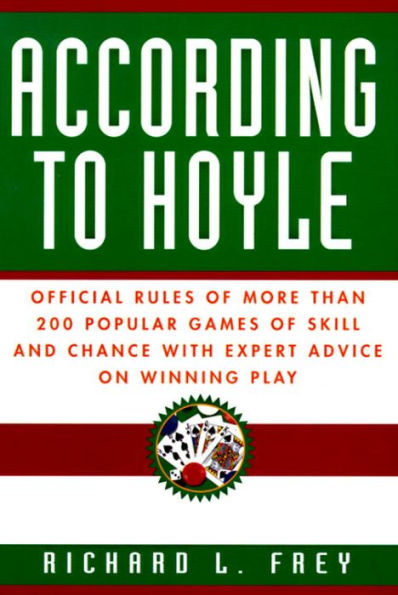Read an Excerpt
Poker
POKER has been called the national card game of the United States, but it is also an international game, popular almost anywhere cards are played. It has many forms and is played differently in different lands and communities, but the basic principle is everywhere the same: to build "structures" consisting of two or more cards of a kind .. . sequences of cards . . . hands composed all of the same suit.
There are no official laws of Poker in the same sense that there are official laws of Contract Bridge. Poker is a game for the rugged individualist, and every game reserves the right to make its own laws. But any game will profit by adopting one set of published laws and abiding by it, and the following laws are offered as worthy for adoption.
STANDARD POKER LAWS
Applying to all forms of the game
PLAYERS. Any number from two to fourteen, but the original players in a Draw Poker game may by agreement limit the eventual number of players to seven or eight; in a Stud Poker game, the original players may by agreement limit the number to nine.
CARDS. The pack of 52, with the cards in each suit ranking: A (high), K, Q, J, 10, 9, 8, 7, 6, 5, 4, 3, 2. There is no rank of suits.
Wild Cards. Any card or cards may be designated as wild The holder of a wild card may designate any other card for which the wild card stands. It is quite usual to play with a 53-card pack, including the joker, the joker being wild.
The Bug. The joker in a 53-card pack is often designated as the Bug. The Bug is a wild card with limitations: It may be counted as an ace, and it may be counted as a card of any suit and rank necessary to make a flush or straight (which terms are defined in the next section).
OBJECTS OP THE GAME. Each player endeavors to hold a better poker hand than any other player in the game. A poker hand consists of exactly five cards.
Rank of Poker Hands. The following list states the combinations that make up valuable poker hands, and their rank.
Five of a kind ranks highest when there is any wild card in the game.
Straight flush ranks highest when there is, no wild card. It consists of five cards in suit and sequence, with the ace ranking either high or low.
Four of a kind is next highest. It consists of the four cards of any one rank together with any fifth card.
A full house ranks next; it consists of any three of one kind and any pair of another kind.
A flush, ranking next, consists of any five cards of the same suit, but not in sequence.
A straight consists of any five cards of two or more suits in sequence of rank, with the ace ranking either high in the sequence or low in the sequence.
Three of a kind are any three cards of the same rank plus two other cards which do not constitute a pair and do not include the fourth card of the same rank.
Two pairs, which rank next under three of a kind, constitute two cards of one rank, two cards of another rank, and any fifth card which is of neither of those ranks; it is referred to by the higher of the two pairs.
One pair—any two cards of the same rank, together with three other cards which do not combine with the other two to form any of the higher-ranking hands above.
No pair—the lowest-ranking hand—losing to any hand containing a pair or any better combination, consists of any five cards not meeting the specifications above.
Object of Betting. The players in the game bet with one another as to which has the best poker hand. Each deal is a separate game, in that its result does not affect any preceding or subsequent deal. All the bets are placed together and form a pot. A player who does not wish to bet that he has the best hand may drop, thus relinquishing any chance to win the pot.
The ultimate object in Poker is therefore to win the pot, whether by actually holding the best hand or by inducing other players to drop and leave the pot to be taken, uncontested, by a single player still willing to bet.



